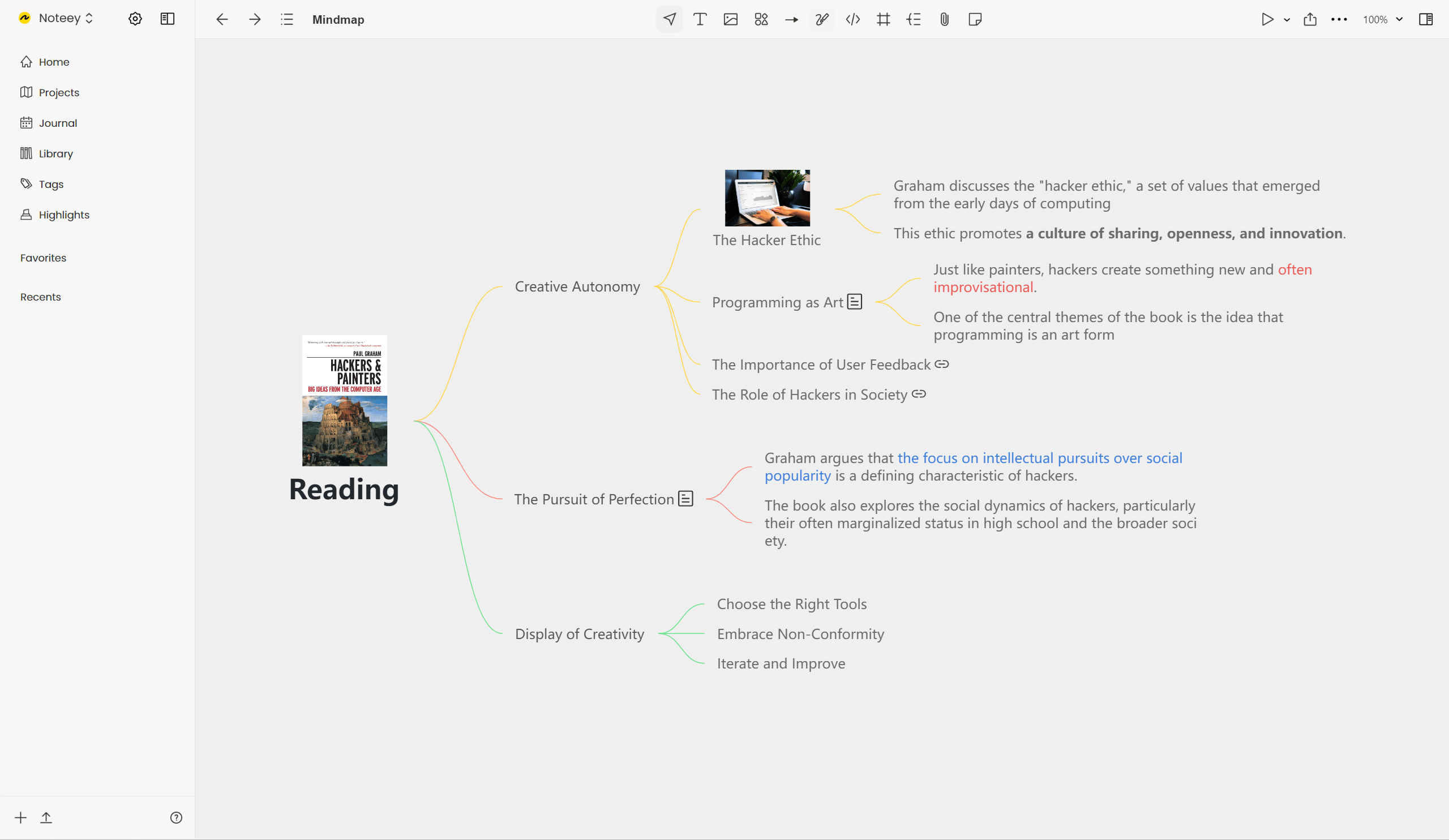Mindmap
Tutorial Video
Introduction
Noteey’s mind map feature helps you visually organize your ideas and knowledge efficiently.
Creating a Mind Map
Creating a mind map in Noteey is simple:
- Click the Mind Map icon in the top toolbar, or
- Right-click and select Mind Map from the options.
Basic Operations
-
Adding Nodes:
- Select a node and press Enter to create a same-level node.
- Press Tab to add a child node to expand your idea.
-
Collapsing and Expanding Nodes:
- Click the collapse icon to hide child nodes and click again to expand them.
-
Reordering Nodes:
- Drag and drop nodes with the mouse to adjust their order.
-
Deleting Nodes:
- Select a node and press Backspace to delete it.
Linking Nodes
One of Noteey’s most powerful features is Linking with Nodes:
-
Link to Cards:
- Type
@to create a new card or link to an existing card. - Click the link icon to open the linked card in the right-side panel.
- Clicking linked cards in different nodes will similarly open them in the side panel.
- Type
-
Add Images:
- Right-click a node and select Add Image to insert an image into the node.
-
Add Web Links:
- Select Add Link and paste a URL to attach a web link.
-
Link to Local Files:
- Use the link feature to connect nodes to local files, such as PDFs.
- Clicking the link will open the PDF in the right-side panel, making it a great tool for organizing local files.

Linking to Content in Noteey
Nodes can link to other content within Noteey:
- Boards, Videos, and Highlights:
-
For example, link a video highlight to a node.
-
Clicking the link will open the video in the right-side panel and automatically locate the corresponding timestamp.
-
Conclusion
Noteey’s mind map is not just a tool for organizing ideas but also a powerful subsystem in Noteey. By leveraging these features, you can build a comprehensive knowledge network to structure and connect your information efficiently.